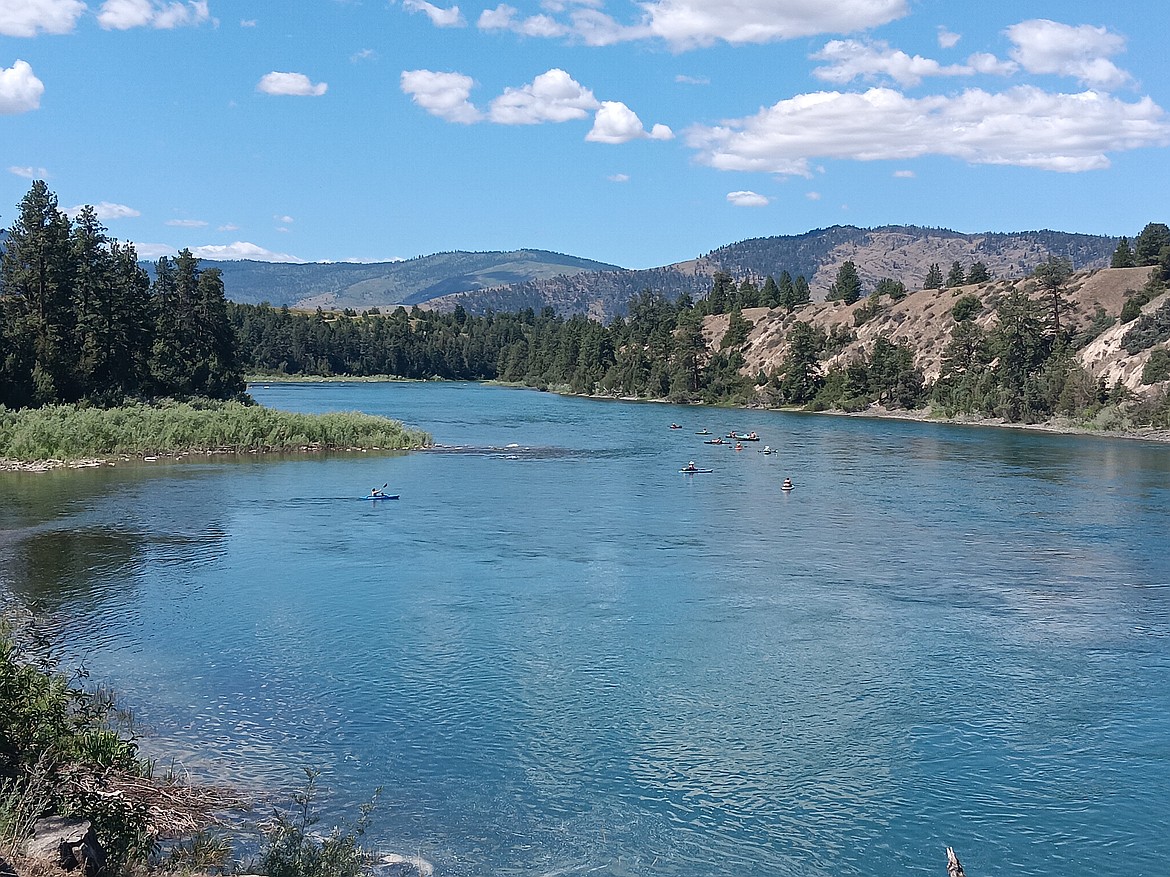Fishing restrictions likely with unseasonably warm water
The Clark Fork River is an angler’s delight during the summer months in Montana. It’s known for its diverse fish populations, including several trout species like rainbow trout, brown trout, and the native westslope cutthroat trout. You can also find mountain whitefish, smallmouth bass, and even northern pike in certain sections throughout Mineral County.
Local fishermen, along with numerous visitors who book guided fishing trips months in advance, are facing concerns about water levels that are occurring earlier than usual and high river temperatures. Snowpack across western Montana was near to below normal this past winter, and with the first half of June reaching above-average temperatures, this led to an early snow melt.
Pat Saffel is the Fisheries Program Manager at Montana Fish, Wildlife and Parks. He remarked, “It looks like we’re headed for hoot owl restrictions that would prohibit fishing after 2 p.m. There could be closures at creek mouths where bull trout are finding refuge.”
Across Region 2, water levels are being reported well below average for this time of year. With hot air temperatures, it’s expected to see water temperatures exceed the criteria for hoot owl closures.
“Flows are more typical of mid to late July at this point,” Saffel noted. “Currently, we are having summer flow levels but spring weather. When the spring weather turns to hot summer temperatures, I expect hoot owl restrictions. I’ve been wrong in the past, though, and I am not good at forecasting weather; I’m not sure anyone is.”
In Region 3, over in the Bozeman area, they currently have a restriction on a section of the Madison River, but there are none in place in Region 2, near Missoula or in Mineral County.
Several factors contribute to the enactment of hoot owl restrictions. Saffel explained, “Most of the time, it is high water temperatures that, with angling, can stress fish. Occasionally, it can be low flows if it makes the fish more vulnerable to angling. Criteria are three consecutive days of greater than 73°F for browns and rainbows, 66 degrees Fahrenheit for Westslope Cutthroat, and 60 degrees Fahrenheit for bull trout.”
After the recent weekend of beneficial precipitation, Layne Hansen, an avid fly fisherman from St. Regis, observed river temperatures about 10 degrees cooler on June 23. He and his angling buddies make annual bets on the height of the river, and when hoot owl restrictions will be put in place. His prediction is July 10.
Hansen said, “Right now the Clark Forks looks like it does by the end of July or early August, not the end of June.”
Saffel stated, “For as long as the rainy days lasted – about 4 days. It looks like we are already back to the river levels when the rain started. We’ll take whatever we can get, however.”
What leads to low water levels in streams and rivers and above-normal temperatures? Saffel shared, “Several factors are in play: below-average snowpack at high elevations, low snowpack at mid to lower elevations, early melt, and last year’s poor water supply having us already in a deficit. Snowpack is key since it provides for a sustained supply of cold water that keeps the temperature from rising to levels that are stressful for trout.”
Some advice for the die-hard fishermen in the summer months to come, dealing with various closures and restrictions. Saffel recommended, “You’ll be able to fish many of the places you normally would, but you should be ready for restrictions that require you to stop at 2 p.m., after which water temperatures are their highest. He also suggested, “Other options are available too, such as higher elevation lakes and reservoirs, and colder streams. There should be plenty of opportunities remaining, even with restrictions.”
“The restrictions are in place to protect the fisheries so we can continue to enjoy them in the future,” Saffel reminded.
Though Flathead Lake is not in Saffel’s jurisdiction, he added, “For larger water bodies such as lakes, fish can often find water temperatures that are suitable, and angling is not detrimental.”
When things heat back up, which the long-range forecast indicates, Saffel offers some advice for fishermen on how to keep the fish healthy in catch-and-release scenarios. He stated, “When water temperatures are warm, it is best to land and release the fish quickly, try to keep them wet and in the water as much as possible, and don’t have them out of the water more than necessary.” Saffel continued, “They may need time to recover before releasing them, but if they are ready to swim away, then they should be good to release. This is true at any water temperature, but especially at warmer temperatures when fish are already stressed.”
For now, anglers can keep baiting hooks and tying on flies, but keep an eye out for the possibility of upcoming closures and restrictions, and be prepared to get your fishing in before 2 p.m.

